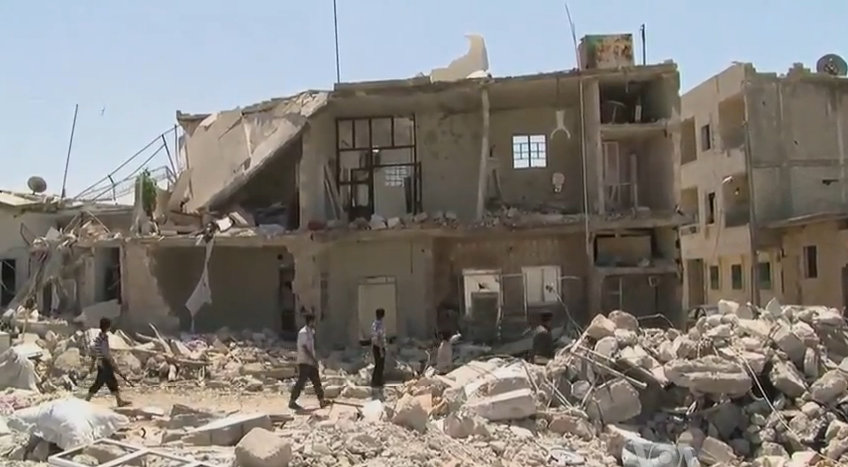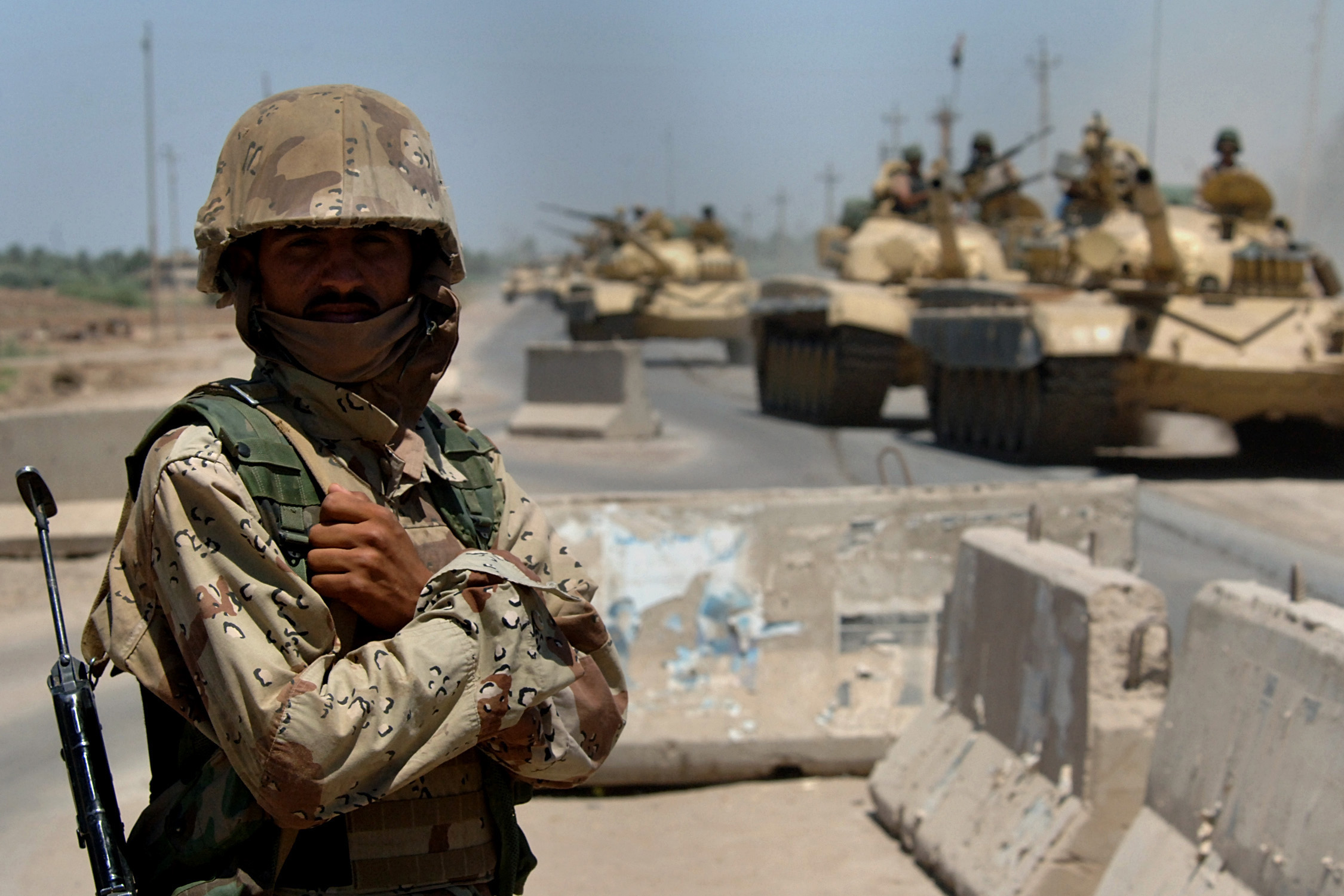The Syrian Civil War is often portrayed as one where deeply entrenched sectarian affiliations predetermine whether one supports the Sunni opposition or the Alawite regime of Bashar al-Assad. It isn’t that simple. While sectarianism is an important driver of Syria’s war, self-interest and security needs also determine which segments of the population support or oppose Assad.
The roots of Syria’s modern sectarian divide begin with the 1963 coup, when the Syrian military and Arab Socialist Ba’ath Party successfully supplanted the country’s Muslim Brotherhood-led democracy. To offset the Brotherhood’s large Sunni base, the Ba’athists courted support from Syria’s minority groups –the Druze, Alawites, Ismailis, and Christians—that make up roughly one-quarter of the country. Because Sunnis make up the remainder of Syria’s population, the Ba’athists have always been exceptionally wary of Sunni-Islamist uprisings.
When Syrian Islamist groups launched an uprising in the 1970s, Ba’athist leader Hafez al-Assad responded with a vicious campaign of violence. Assad’s macabre grand finale to the crackdown was the 1982 siege of Hama, a rebel stronghold, where Syrian armed forces killed over 20,000 civilians, bulldozed neighborhoods, and paved over their flattened remains. Assad’s unrestrained brutality halted the uprising, but left a permanent mark on Syria’s Sunni Islamists.
Following the uprising, the regime was increasingly threatened by political Islam and reinforced its secular policies by restricting state-funded religious institutions and religious practices, further marginalizing Sunnis.
The Assad regime’s exclusionary policies continued under Hafez’s son, Bashar, who became president in 2000. Bashar refused the demands of Islamist parties for political inclusion and increased state control over religious institutions. He also revitalized secular policies by issuing restrictions on displays of religious affiliations and dress, in addition to closing prayer halls in shopping malls. These policies frayed the relationship between the regime and conservative Muslims, especially Sunnis.
After taking over from his father, Bashar launched an economic liberalization project, shifting Syria’s socialist economic policies to the right. This benefitted those close to the regime, but also the Sunni merchant classes who grew richer as a result of freer markets. This strengthened ties between the Assad regime and wealthy Sunni urbanites. However, Assad’s economic liberalization policies hurt poor and rural Sunnis, who had benefitted from his father’s social safety net and pro-agrarian policies.
When the 2011 Arab Spring protests broke out, the demands of the protesters were not inherently sectarian. They demanded greater political freedoms, the release of prisoners, and an end to government corruption and repression.
Following in his father’s footsteps, Bashar responded to the uprising with unrestrained violence. Immediately, he began to characterize the protests as the work of terrorists and violently cracked down on public demonstrations, killing civilians and torturing detainees.
Assad’s inaccurate portrayal of the protesters as terrorists became a self-fulfilling prophecy, as the conflict spiralled out of control and the country fractured along sensitive sectarian lines. By increasing its repression, the regime alienated more of its population, creating an opportunity for jihadist groups like ISIS to prosper.
Aware of the power vacuum he created, Assad focused his forces against the moderate opposition in an effort to give Syrians a choice: either me or the jihadists. This brutal but tactically brilliant strategy forced Syrians to chose between the lesser of two evils.
For many rural Sunnis, backing ISIS is preferable to siding with Assad. After years of political exclusion, violent repression, and economic decline, many rural Sunnis are left with no reason to support a regime that treated their demands for freedom as an act of terror. The jihadist groups have successfully leveraged Sunni anger to ignite deep-seated sectarian tensions, equating membership of the Alawite sect with enthusiastic support of Assad’s brutality.
However, the alliance between the regime and Alawites is a marriage of necessity and security, not enthusiasm. While Alawites fill a large percentage of political and military positions, most have joined for a stable income and are not part of a privileged upper class, as the jihadists like to portray them. Many Alawites resent Assad, seeing his despotism as the reason their country is embroiled in civil war.
Yet with the absence of a strong, moderate opposition, Assad is their only hope for protection against Syria’s extremists. In the eyes of Wahhabi jihadists, Alawites are apostates and should be killed. In several villages, systematic killings of Alawite civilians have already taken place, causing the small Alawite population to fear extermination at the hands of Sunni jihadists.
The pattern of reluctant acceptance of Ba’athist rule runs true for most of Syria’s other religious minorities—Christians, Shiites, and to a lesser extent, Druze—who all fear the dangers of radical Sunni rule. However, Syria’s middle and upper class Sunnis, who are often more religiously moderate and have benefitted economically under Assad, also constitute a significant portion of Assad’s support. Like most Syrians, they begrudge Assad’s cruelty and oppression, but feel more threatened by the extremist opposition and the brutality they display on social media.
Additionally, many Sunni urbanites perceive the jihadist opposition as an unsophisticated and conservative rural movement, dissuading them from joining their co-religionists. Contrary to perceptions of the Assad regime being an Alawite-only force, Sunnis make up 60-65 percent of the Syrian armed forces.
There is no question that sectarianism is a critical aspect to the Syrian conflict, but as the civil war endures, Syrians are increasingly willing to side with the forces that offer them security—whether that is ISIS or Assad. As the relationship between Assad and his supporters is transactional, security in exchange for support, it suggests that Assad himself is not an integral part of the solution in Syria.
Indeed, Assad’s supporters would be willing to surrender him so long as their security needs are met, a prospect that bodes well in theory for Assad’s international opposition. If he can be replaced, the large Sunni contingent in his armed forces could serve as a basis for an Awakening-style Sunni resistance to Syria’s jihadists. But for now, getting Assad to step down and finding a suitable replacement remains an exceedingly difficult task.




